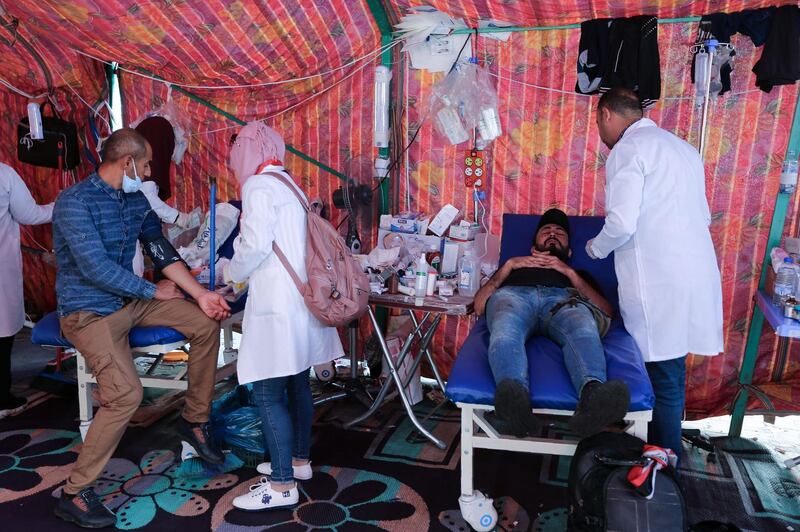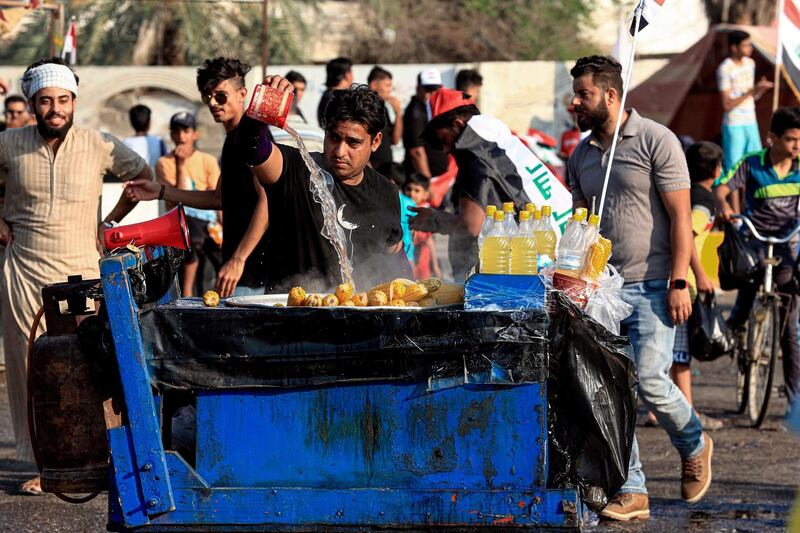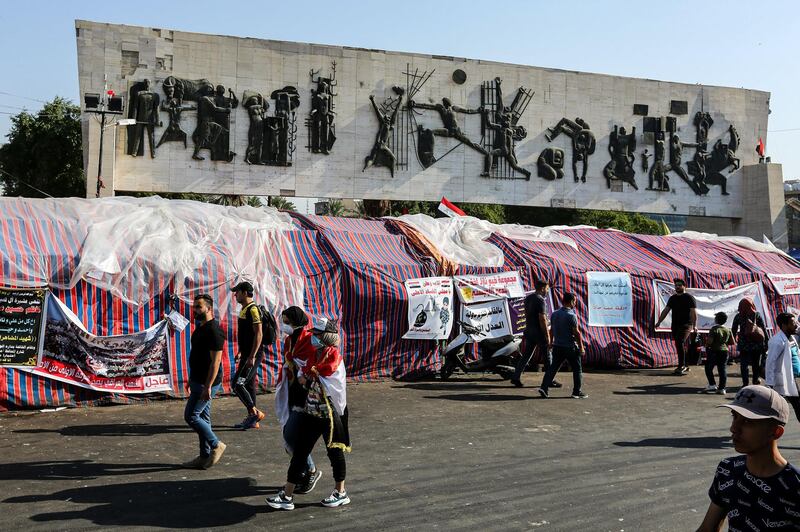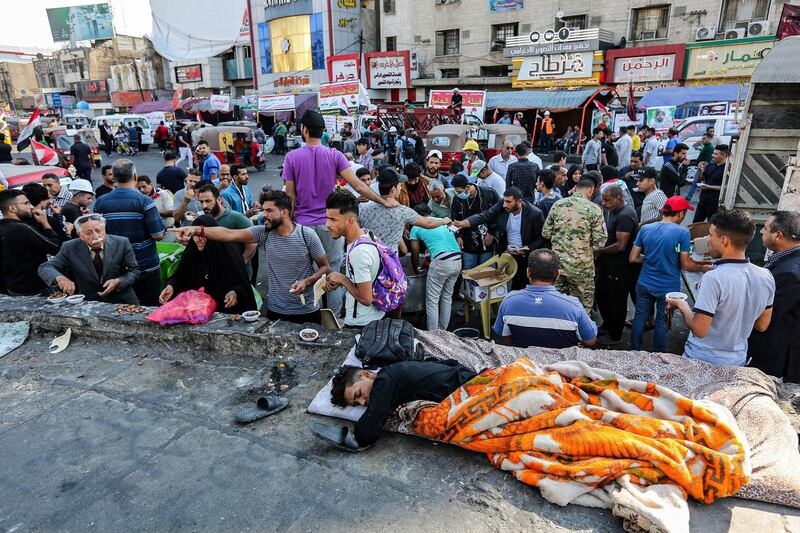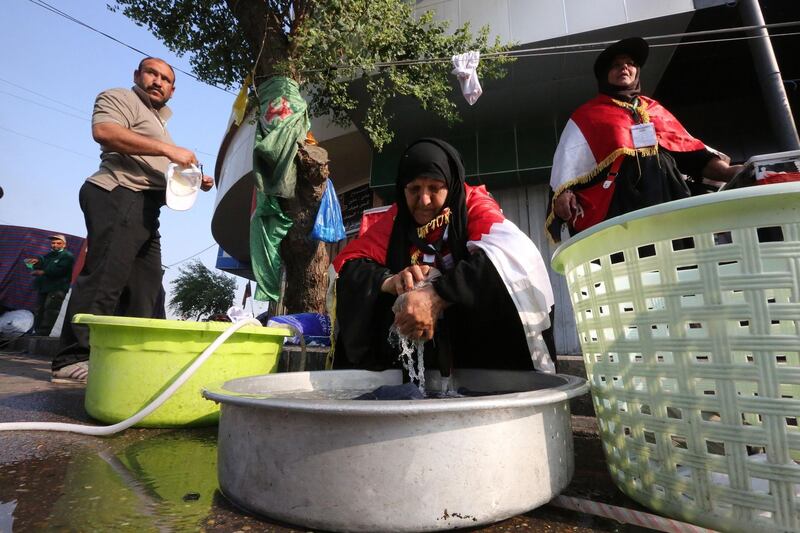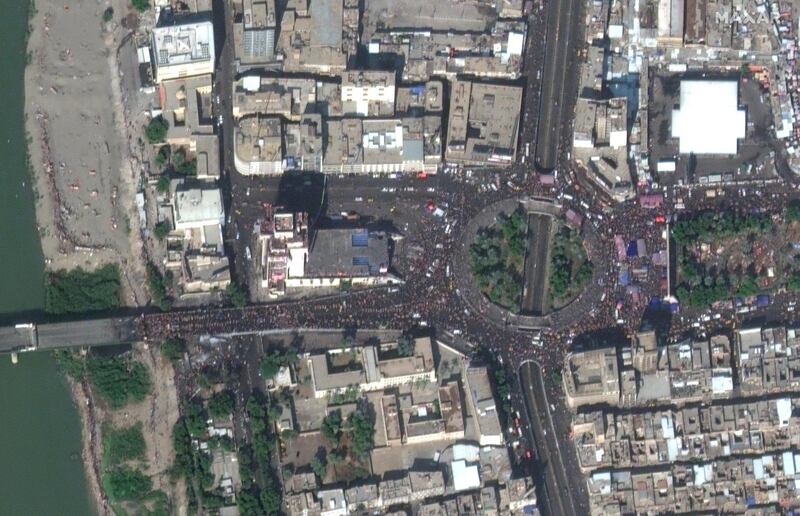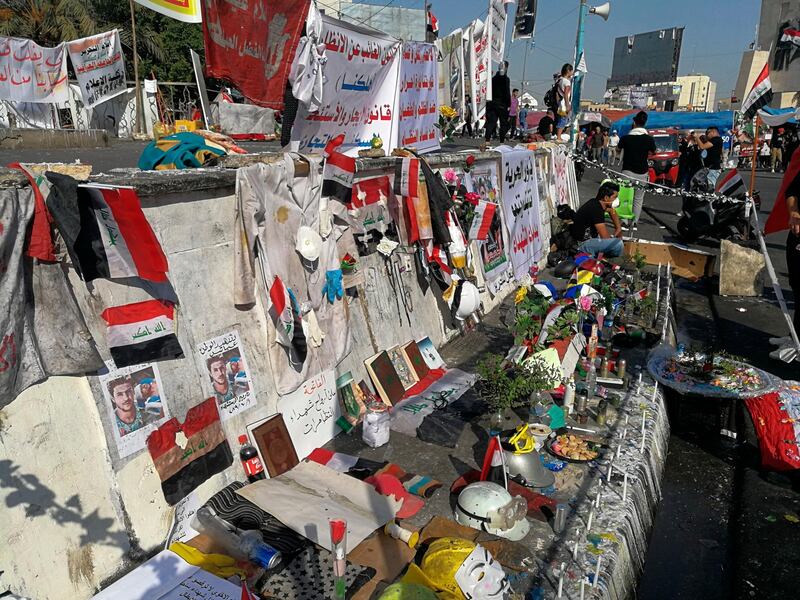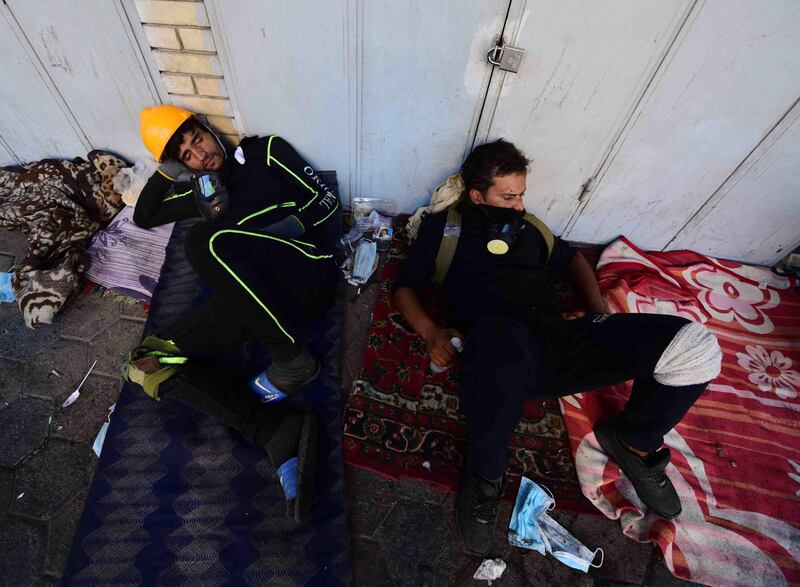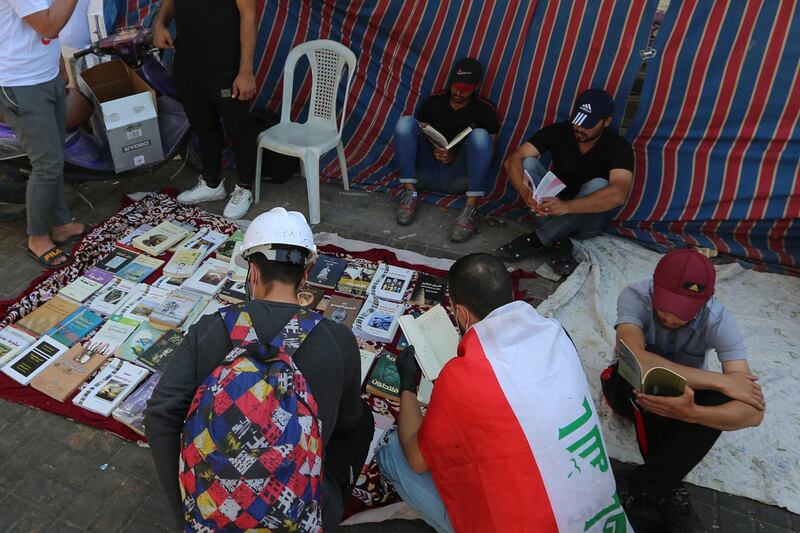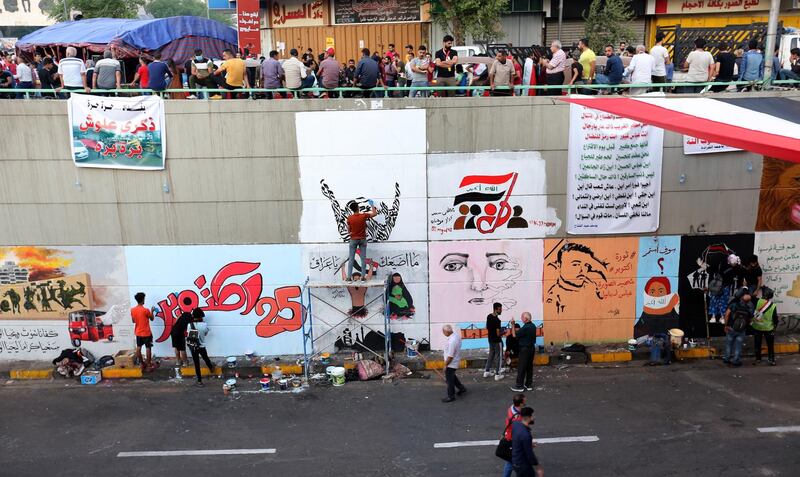Demonstrators have turned Baghdad's Tahrir Square into a "mini state" where different sects work together and women have equal say, as protests drag into a second month.
Dozens of tents have popped up in the square over the past few weeks, offering free services such as food supplies, medical treatment, legal advice and even media centres to convey the protesters' messages.
But unlike the country, the tents have no central authority to govern them. For the first time since 2003, Iraqis are uniting in their demands for change.
The protests have bridged divides between different religious sects against the political elite’s failure to deliver basic services.
Protesters say the square has become a revolution against the government and traditional divisions in Iraqi society.
Men and women mingle in the square and people from different backgrounds work together to clean the streets.
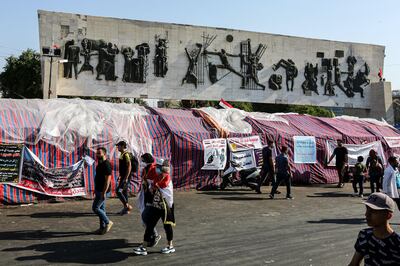
"The demonstration is the greatest thing that can happen to Iraq because men and women are supporting each other," Nour Faisal, 22, a writer and protester, told The National. "We have cut all the red lines.
Ms Faisal has taken part in the protests since they began on October 1. She now contributes to a newspaper called Tuk Tuk, which was founded by the protesters.
“Yazidis, Sunnis, Christians, we are all here to just be real Iraqis and support each other for freedom and for a good life,” she said.
Muamal Al Sumari, a student organiser, said the demonstrations had broken down social boundaries and unified the public.
“In Tahrir, it’s impossible to be divided by sectarianism or class," Mr Al Sumari said.
"There are people here from all classes but in Tahrir Square they’ve become one class with one voice – a united voice."
He writes for The People's Way, another newspaper founded by the demonstrators.
“The protesters are interested in the media,” Mr Al Sumari said.
Internet restrictions imposed by the government pushed the public to create their own forms of spreading news, he said.
Tahrir Square: a blueprint for the future of Iraq?
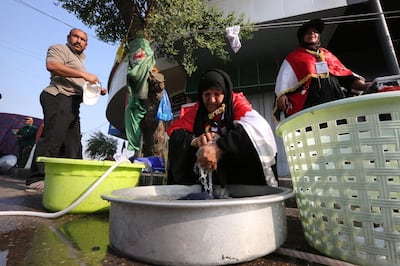
Tahrir Square has become a centre for tents hosting protesters, doctors, engineers and activists, who together provide support for demonstrators.
“I’ve been staying here to help the protesters who have been injured on bridges with sound bombs and tear gas canisters,” Dr Muhamed Al Majed said.
“We give them emergency [treatment] with oxygen and, in serious cases, we help get them ambulances that will take them to a nearby hospital."
Those facing violence on Jumhuriya Bridge are being provided with helmets and masks by co-ordinators.
“Everything is available. Food, clothing, helmets, medicine; we have everything,” said student Ali Shuhany, 21. “People want to help. Even if they are scared, they buy things to help people here."
Baghdad’s Turkish restaurant becomes powerful symbol of protests
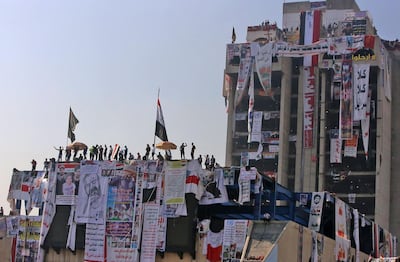
At the front of the square, on the edge of the Jumhuriya Bridge, the 14-storey "Turkish Restaurant Building" has changed since the first days of the protests.
Protesters have organised checkpoints at the entrances for men and women, and each floor has a co-ordinator who communicates with the other floors by walkie-talkie.
"We will have a floor for the artists and the painters, one for the musicians, one for a library, and we will also have paintings of the suppressed," Mohamed Al Waely told The National.
The building has been abandoned since 2003 after it was hit during the US-led invasion. It has now been taken over by the protesters who have sworn not to leave it.
As the protests developed, people in the building started thinking bigger than organising basic services.
“We're not just thinking about support like water and food, we need to think about things clearly,” Mr Al Waely said.
He said protesters in the building started holding open forums on how to proceed with the demonstrations.
“I began by talking to everyone who was there and they all had different ideas, but there was an agreement to share ideas and to get the picture right,” Mr Al Waely said.
He thinks the organisation in Tahrir Square could become a symbol of what the protesters want to achieve for Iraq as a nation.
“This building will become a symbol for the world to see how the protesters operate, despite the violence and suppression they face,” Mr Al Waely said.
